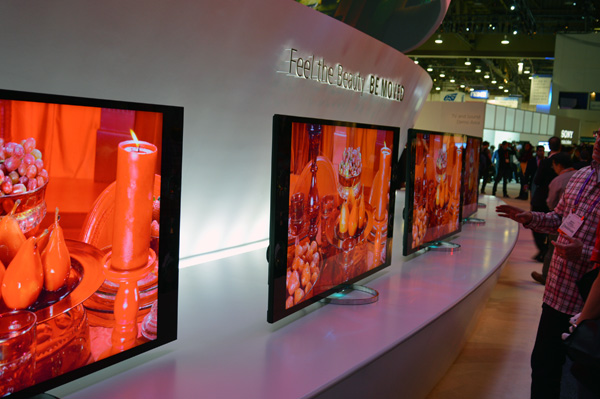The Consumer Electronics Show (CES) in Las Vegas is coming up from Jan. 7-10 and as it usually does, the trade show introduces and foreshadows what is to come in the consumer tech world for the rest of the year. From bigger TVs, wearable gadgets and increasingly connected homes and cars, there will be plenty of possibilities once things kick off next week.
As per usual, new TVs will headline much of the show’s events and showcases, but the rest of the story will likely revolve around how much closer technology is getting to us, both in proximity and convenience. This will range from wearable tech gadgets to products and services that will increasingly connect us to our homes and vehicles.
Bigger and bigger TVs
Samsung has announced a 110-inch 4K Ultra HD TV for the hefty price of $150,000. At last year’s CES, it was the 80-inch size that fared more prominently on the show floor because of the practicality around it. It was the perfect size to show off the improved picture quality 4K is meant offer. That will continue to be the story at CES this year, except that prices will be expected to drop enough to make an 80-inch more affordable by the end of 2014.
The other part of the 4K story will be content. Where will it come from and how soon will it be available? There are already expectations that Ultra HD Blu-ray discs and Netflix 4K streaming will be made available in the coming year, and questions about that should be answered, at least to some degree, at the show.
Curvy screens
Curved OLED TVs created a little hype before the end of 2013, but their price points make them too expensive for most consumers. The idea of curved displays won’t go away, however, as there is a school of thought suggesting it’s a better and more natural way to view something onscreen (like at the movie theatre, for example). This may go beyond TV screens and be a factor in smartphones and tablets, like the Samsung Round, which was released in South Korea already. Mobile devices are rarely now unveiled at CES, so there may not be a ground-breaking phone or tablet on the show floor other than prototypes to show off. Either way, curved displays will almost certainly come up in conversation.
Wearable tech
When we talk about wearable tech, we’re not really talking headphones and earbuds. This trend largely started with health and fitness gadgets like the wristbands, modules and heart rate monitors that initially stood out in the pack of iOS accessories. This is pretty much a category unto itself now, with a wider range of choice and far better features and performance than even two years ago. Expect that trend to continue with health taking the lead, focusing not just on exercise and fitness, but also wellness, prevention and disease management. It’s possible that this might even start extending to pets as well. In addition, look for wearable cameras to get even better, and the trend of smartwatches to also get a second look after a somewhat muted start.
A connected home
Home automation is slowly creeping into the usual consumer tech conversations because the products meant for home are connecting to mobile devices people always use. Connected appliances haven’t really taken off yet, but more affordable networking products certainly have. The likes of Belkin, Philips and Swann will compete against both established brands and newcomers to present how much you can control in your home, regardless of whether you’re actually there or not. Smart light bulbs, power outlets and power conservation gizmos will be part of the story, but it will go further to include everything from heating and air conditioning to water usage.
A connected car
Automakers have struggled to keep up with the hastening pace of consumer electronics, which is why increased connectivity in the car will be a balancing act between manufacturers and third-party developers. GM and Ford made headlines at CES 2013 when they both announced they would open up their respective dashboards to developers, and though the rollout is still yet to show its mettle, the move will make a lasting impact in the near future. Expect to see more details on how automakers will do better to offer improved integration, along with aftermarket manufacturers looking to one-up them with products and features that go further.




